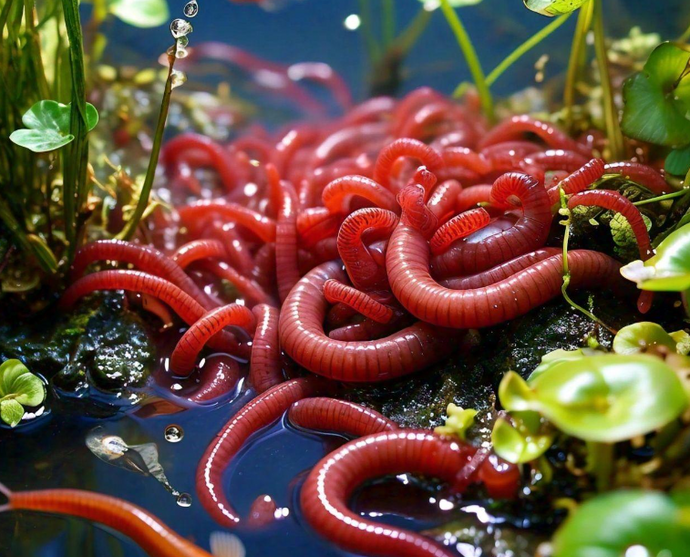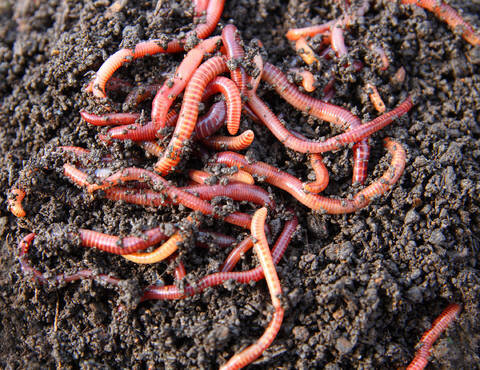Composting champions red wigglers: How to maintain them
Composting champions red wigglers: How to maintain them
Blog Article
The Duty of Red Wigglers in Sustainable Horticulture
The combination of red wigglers right into lasting gardening practices supplies an engaging strategy to enhancing soil health and wellness and reducing organic waste. These organisms not just convert kitchen area scraps right into nutrient-dense compost via vermicomposting yet additionally aerate the dirt, promoting ideal conditions for plant development. As they break down complex natural products, they actively cultivate a growing microbial environment crucial for lasting agriculture. However, the implications of using red wigglers prolong past mere composting; their duty fit a more lasting future warrants a much deeper expedition of their benefits and functional applications.
Understanding Red Wigglers
Red wigglers, medically called Eisenia fetida, are a species of earthworm renowned for their duty in sustainable gardening and composting techniques - red wigglers. These worms grow in breaking down raw material, making them specifically effective in transforming kitchen scraps and lawn waste into nutrient-rich compost. Unlike typical earthworms, red wigglers have a higher resistance for varying moisture degrees and can prosper in environments with plentiful organic material
(Worm Farms Near Me)Classically, red wigglers are smaller sized than their earthworm equivalents, normally measuring between 3 to 4 inches in size. They possess a reddish-brown coloration and have a fractional body structure that helps in their burrowing and feeding tasks. These microorganisms are hermaphroditic, indicating each private possesses both male and women reproductive body organs, which allows for reliable population development under ideal problems.
The environment preferences of red wigglers include wet, dark atmospheres abundant in organic content, such as garden compost containers or worm ranches. Their eco-friendly function extends beyond composting; they are essential in freshening the dirt and facilitating vitamins and mineral biking, which inevitably adds to much healthier garden communities. red wigglers. Recognizing the biology and behavior of red wigglers is vital for those seeking to carry out effective vermicomposting in sustainable gardening
Benefits of Vermicomposting
Vermicomposting deals countless advantages that improve lasting gardening methods and add to ecological health and wellness. One of the primary benefits is the change of natural waste into nutrient-rich compost, which enhances dirt structure and fertility. The spreadings produced by red wigglers are packed with useful microbes and important nutrients, making them an outstanding all-natural fertilizer.
Additionally, vermicomposting dramatically decreases landfill waste. By drawing away kitchen area scraps and backyard waste from landfills, this method not only minimizes methane emissions-- a potent greenhouse gas-- yet additionally promotes a round economy, where waste is repurposed as a source.
One more benefit is the enhancement of dirt aeration and drain (red wigglers). The burrowing activity of red wigglers develops networks in the soil, enabling air and water to permeate more conveniently, therefore promoting a healthier origin system for plants
In addition, vermicomposting can be done on a little scale, making it available for metropolitan garden enthusiasts and those with limited room. This method motivates environmental stewardship and awareness, as people come to be more engaged with their waste management techniques. Eventually, vermicomposting stands for a lasting, efficient, and environment-friendly technique to horticulture that benefits both plants and the world.
Just How to Begin Vermicomposting
Starting your own vermicomposting system can be a fulfilling undertaking that boosts your lasting horticulture methods. To start, select a proper container, such as a plastic container or wooden box, with excellent drain and air flow. The dimension will certainly rely on the volume of cooking area scraps you create; a container of 10-14 gallons generally is sufficient for a family.
Next, prepare the bed linen material. Shredded newspaper, cardboard, and coconut coir are superb alternatives, giving a comfortable habitat for the red wigglers. Go for a bedding deepness of regarding 4-6 inches, which should be damp however not soggy.
When the bedding is developed, present your worms. Red wigglers (Eisenia fetida) are one of the most suitable for composting. Begin with approximately one pound of worms for every single 2-3 pounds of kitchen area scraps weekly.
Begin adding kitchen area waste, avoiding meat, dairy, and oily foods, as these can attract parasites and create smells. Consistently keep track of the bin's dampness levels and temperature level, guaranteeing it remains within the suitable range for worm activity. With these preliminary actions, you'll be well on your way to producing nutrient-rich garden compost for your yard.
Maintaining a Healthy Worm Container
A thriving worm bin needs regular treatment and attention to preserve an ideal setting for the red wigglers. Key elements to keep an eye on consist of dampness degrees, temperature, and food supply. Maintaining a wetness level similar to a wrung-out sponge is crucial; way too much water can result in anaerobic conditions, while inadequate can dry out the worms.
Temperature level is additionally crucial, as red wigglers flourish in a series of 55 to 77 levels Fahrenheit. Extreme temperature levels can worry the worms, possibly causing death. Positioning the container in a climate-controlled location or utilizing protecting materials can assist regulate temperature fluctuations.

Finally, aeration is essential. On a regular basis turning the bed linens and utilizing a fork or shovel can prevent compaction and advertise airflow, making certain a healthy, thriving setting for the red wigglers. By adhering to these techniques, gardeners can keep an efficient worm container that supports lasting gardening initiatives.
Effect On Soil Health
Enhancing dirt health with the usage of red wigglers is an essential facet of sustainable horticulture. These worms, recognized clinically as Eisenia fetida, play a crucial role in boosting soil framework and fertility. By eating organic issue, red wigglers damage down complex products right into simpler substances, a procedure understood as vermicomposting. The end product, worm spreadings, is abundant in necessary nutrients, including nitrogen, phosphorus, and potassium, which are crucial for plant development.

(red wiggler worms near me)Research studies have actually revealed that dirts enriched with worm castings display raised microbial activity and enhanced fertility, causing greater plant yields. By integrating red wigglers into horticulture techniques, garden enthusiasts not only enrich their soil however likewise add to an extra lasting agricultural system, emphasizing the interconnectedness of soil health and wellness and ecological stewardship.

Conclusion
In final thought, red wigglers substantially add to lasting gardening through their effective vermicomposting practices. Their capacity to transform natural waste right into nutrient-rich compost enhances dirt fertility and sustains a varied microbial ecological community. In addition, their burrowing task enhances soil aeration and water retention, profiting plant wellness. By promoting waste decrease and cultivating a round economic climate, red wigglers become important components in eco-friendly horticulture efforts, underscoring their essential duty in environmental sustainability.
Report this page